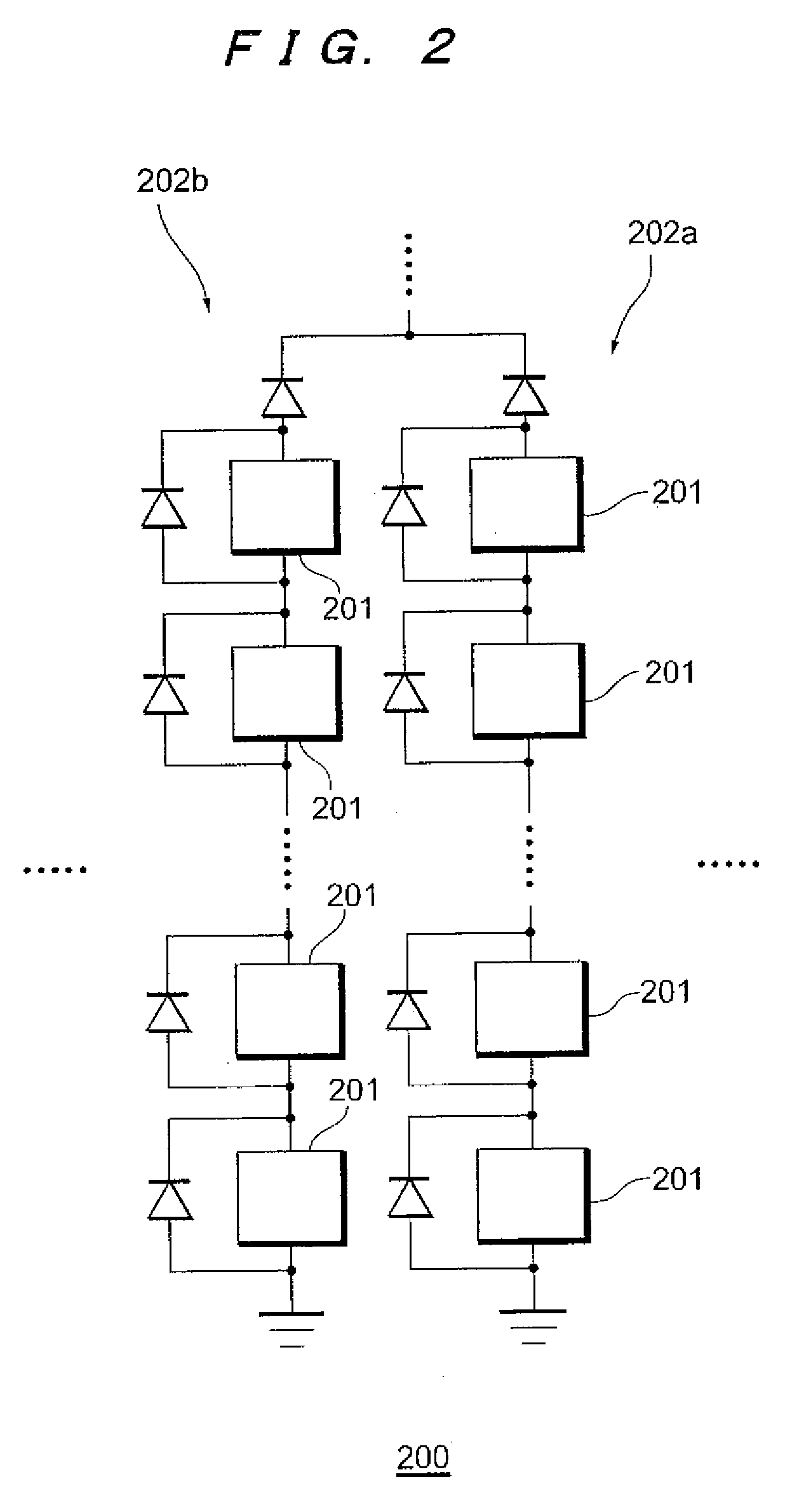Photovoltaic Device Characterization Apparatus
a photovoltaic device and characterization technology, applied in photovoltaic monitoring, climate sustainability, sustainable buildings, etc., can solve the problems of inability to obtain the prescribed output of certain solar cells, inability to achieve the prescribed output, and difficulty in determining whether the generated output of the photovoltaic device is corr
- Summary
- Abstract
- Description
- Claims
- Application Information
AI Technical Summary
Benefits of technology
Problems solved by technology
Method used
Image
Examples
Embodiment Construction
[0033]Embodiments of the present invention are now explained with reference to the attached drawings.
[0034]FIG. 1 is a diagram explaining the configuration of a solar cell module characterization system according to an embodiment of the present invention. The characterization system 100 shown in FIG. 1 is for performing the characterization of a solar cell module 200, and is configured from a characterization apparatus 10, a computer 12, thermometers 14, 20, an actinometer 16, and a reference cell 18.
[0035]The characterization apparatus 10 is connected to the solar cell module 200 via a wiring, and evaluates the characteristics of the solar cell module and displays the result of such evaluation. The characterization apparatus 10 is connected to the computer 12 via a fixed line such as USB (universal Serial Bus) or a wireless communication means, and is able to transfer the measured characteristic value or the evaluation result to the computer 12. The characterization apparatus 10 of...
PUM
 Login to View More
Login to View More Abstract
Description
Claims
Application Information
 Login to View More
Login to View More - R&D
- Intellectual Property
- Life Sciences
- Materials
- Tech Scout
- Unparalleled Data Quality
- Higher Quality Content
- 60% Fewer Hallucinations
Browse by: Latest US Patents, China's latest patents, Technical Efficacy Thesaurus, Application Domain, Technology Topic, Popular Technical Reports.
© 2025 PatSnap. All rights reserved.Legal|Privacy policy|Modern Slavery Act Transparency Statement|Sitemap|About US| Contact US: help@patsnap.com



